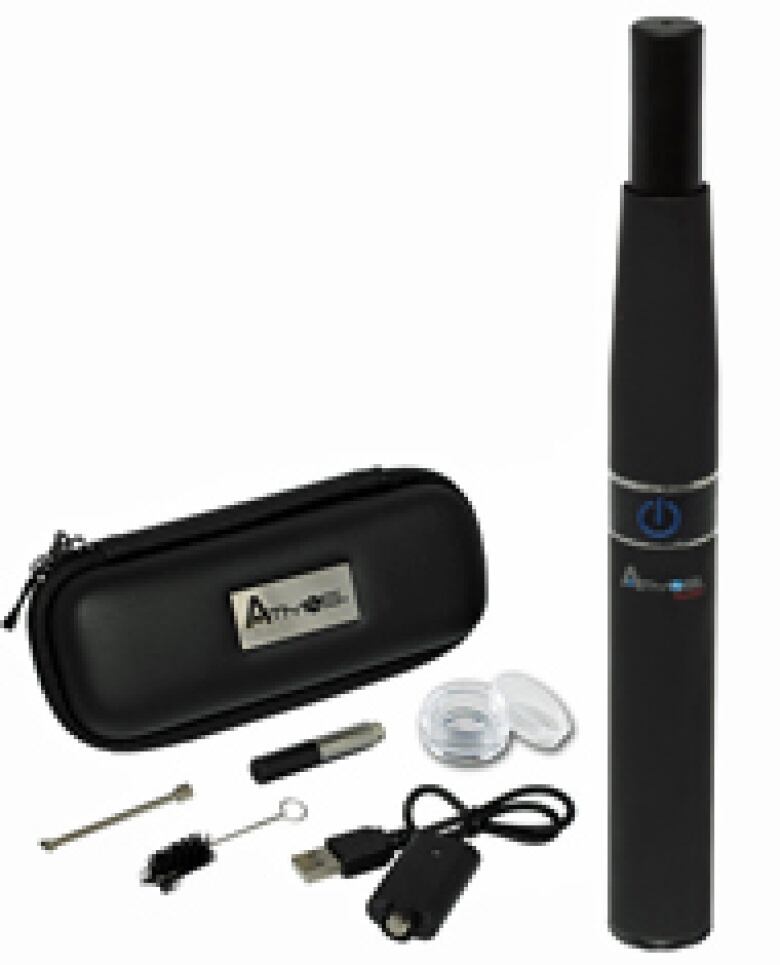Vaporizing marijuana reaching trend status, Canadian doctor says
'Vaping' pot gains popularity as health benefits and dangers debated

Vapourizing marijuana is gaining momentum as a safer alternative to smoking it, says a Canadian doctor.
Vapourizing involves placing either raw cannabis or tetrahydrocannabinol (THC) oil into a portable vaping pen or non-portableplug-in machine. Theproduct is thenheated until right before the point of combustion, turning the components of the plant into a gas that is released as a vapour.

"I think its still trending up in that a lot of people arent really aware of the health benefits of vapourizing, or at least the harm reduction aspects of it," says Dr. Ian Mitchell, an emergency physician and clinical assistant professor at the University of British Columbia in Vancouver."But I think its inevitably coming, as much because of the medical marketplace as the institutional use."
Although medical marijuana has been legal in Canada since 2001, cannabis is listed as an illicit drug under the Controlled Drugs and Substances Act when the user doesn't have a prescription.
One vapourizer is currently approved by Health Canada, says Mitchell, who is also a member of the Canadian Consortium for Investigation of Cannabinoids. The device costs roughly $600.
Last month, a commentary in the Canadian Medical Association Journal sparked a debate among doctors about medical marijuana use. The topic has been raised in the medical sphere since Canadas Marihuana for Medical Purposes Regulations (MMPR) came into effect in April 2014.
Titled, "New medical marijuana regulations: the coming storm," the commentary emphasizes the need to have clear guidelinesfor Canadian physicians who may be asked to prescribe dried cannabis to their patients. However, one talking point mentioned by the authors, Dr.Meldon Kahan and Dr. Anita Srivastava, has been arguably under-discussed.
According to Kahan, who is also medical director of substance use service at Womens College Hospital, in Toronto, although both vapourizing and smoking marijuana are equally effective in delivering levels of THC to the brain, the concept is not that simple.
"While it may be safer in protecting people from chemicals, it doesnt necessarily prevent the harms of cannabis in terms of intoxication and cognitive impairment because thats intrinsic to THC. So, it doesnt make it a safe medicine, it makes it a safer medicine," Kahan says.

While Kahan and Mitchell agree that vapourizing has its benefits, they say many hospitals in the country still struggle with allowing medical marijuana use to take place and many doctors are still uncomfortable with prescribing it.
About 40,000 Canadians are officially registered as medical marijuana users, according to Health Canada.
More policy discussions need to take place over the use of vapourizers in Canada, said Dieter MacPherson, executive director of the Victoria Cannabis Buyers Club.
"I dont think theres any controversy around the actual act of vapourizing. I think the science is very sound surrounding its efficacy and safety. I think there may be controversy around things like where is can be used, whether it be the workplace or in public," MacPherson says.
"I think there needs to be serious policy discussion surrounding what is appropriate and what is not appropriate," he says. "I dont think itll be difficult."
Physicians like Kahan and Mitchell, as well as those in the medical marijuana industry, like MacPherson, want patients to know this option is available as a healthier, safer alternative for pain reduction.












_(720p).jpg)


 OFFICIAL HD MUSIC VIDEO.jpg)
.jpg)



























































































